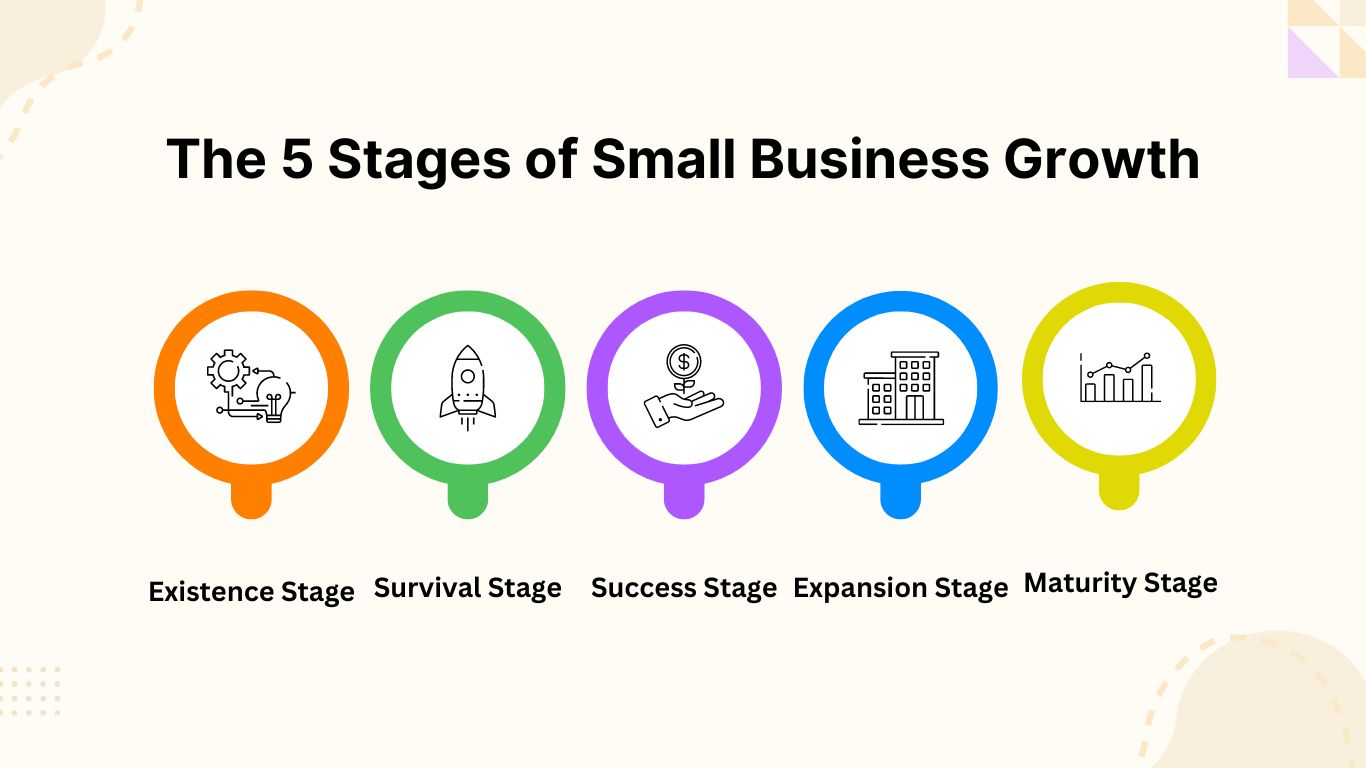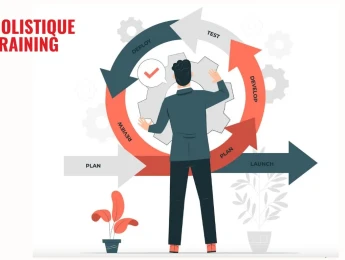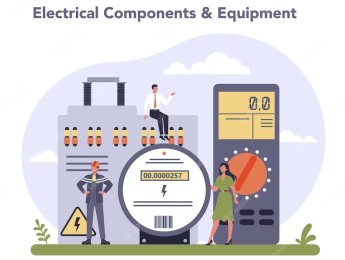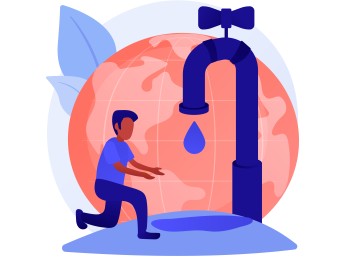- Table of Contents
- Introduction
- What Is Small Business Growth?
- How to Measure Growth as a Small Business
- 1. Revenue and Profitability
- 2. Customer Acquisition and Retention
- 3. Market Penetration
- 4. Employee Growth and Productivity
- 5. Innovation and Product Development
- 6. Customer Satisfaction
- The 5 Stages of Small Business Growth
- 1. Existence Stage
- 2. Survival Stage
- 3. Success Stage
- 4. Expansion Stage
- 5. Maturity Stage
- Small Business Challenges in 2023
- Digital Transformation
- Talent Acquisition and Retention
- Supply Chain Disruptions
- Rising Costs
- Cybersecurity
- Regulatory Compliance and Policy Changes
- Customer Experience Expectations
- Environmental Sustainability
- Conclusion
Introduction
Starting a small business is an exciting endeavour, but the ultimate goal for any entrepreneur is to achieve sustainable growth and success. Small business growth refers to the expansion and development of a company over time. It involves increasing revenue, expanding customer base, and improving profitability. However, achieving growth in a competitive market can be challenging, and it requires careful planning, strategic decision-making, and adaptability. In this blog post, we will explore the main factors contributing to small business growth, how to measure growth, and the five stages.
What Is Small Business Growth?
Small business growth is the process of increasing a company's size, scale, and profitability. It goes beyond simply generating more sales or revenue. Growth encompasses various aspects, including expanding the customer base, entering new markets, developing new products or services, enhancing operational efficiency, and improving brand recognition. Successful growth allows small businesses to create job opportunities, contribute to the economy, and achieve long-term sustainability.
How to Measure Growth as a Small Business
Measuring growth is crucial for assessing the progress of a small business and making informed decisions. While revenue growth is an important metric, it is not the sole indicator of a company's success. Here are some key factors to consider when measuring growth as a small business:
1. Revenue and Profitability
Revenue is the lifeblood of any business. Tracking revenue growth over time is crucial for assessing the company's overall financial health. A steady increase in revenue is a positive sign and demonstrates that the business is generating more income, which can be reinvested to support growth initiatives. However, it's essential to consider the source of revenue growth. For instance, a sudden spike in revenue due to a one-time event or unsustainable practices may not indicate sustainable growth.
Profitability goes hand in hand with revenue. It's not just about how much money is coming in but also how much the business keeps. Monitoring profit margins, which is the percentage of revenue that remains as profit after expenses, helps assess the business's efficiency. A growing business should aim to maintain or improve profitability while increasing revenue.
2. Customer Acquisition and Retention
Customer acquisition metrics reflect a business's ability to attract new customers. It's important to track the number of new customers and the cost of acquiring them. A high cost per acquisition relative to the customer's lifetime value can indicate inefficiency in the marketing and sales processes.
Customer Retention metrics, on the other hand, focus on maintaining existing customers. A loyal customer base is invaluable as they often spend more and are less expensive to serve than new customers. High customer retention rates suggest that your products or services meet customer expectations and keep them returning.
3. Market Penetration
Market penetration metrics assess how much of your target market your business has captured. They indicate your business's success in attracting and retaining customers within a specific market segment. As your market penetration grows, it means you are gaining a larger share of the market. This metric is essential for understanding how effectively your business competes in your industry.
4. Employee Growth and Productivity
The number of employees in your business can be a crucial metric, especially for service-oriented businesses or those requiring manual labour. Tracking the growth in the number of employees can indicate your business's capacity for expansion. However, it's not just about hiring more people; it's also about their productivity. Productivity measures the efficiency and output of employees. Higher productivity means you can get more done with fewer resources, which is often necessary for small businesses with limited budgets.
5. Innovation and Product Development
Innovation and product development metrics reflect your business's commitment to staying competitive and meeting customer needs. Evaluating how often new products or services are introduced, or existing ones are improved showcases your adaptability and creativity. It's not just about the quantity but the quality of innovation – are these changes positively impacting your bottom line and customer satisfaction?
6. Customer Satisfaction
Customer satisfaction metrics provide insights into how well your business meets customer expectations. Satisfied customers are likelier to repeat purchases and recommend your business to others. High customer satisfaction can also translate into positive reviews and testimonials, bolstering your brand reputation.
It's important to note that these metrics are interconnected, and improvements in one area can lead to positive outcomes in others. For example, enhancing employee productivity can lead to better customer service and, subsequently, higher customer satisfaction. Moreover, the timing and context of these metrics can vary by industry, so it's essential to tailor your measurement strategy to your specific business and market.
A comprehensive understanding of these growth metrics can empower small business owners to make informed decisions, fine-tune strategies, and proactively address any challenges hindering growth. Regularly tracking and analysing these metrics should be an integral part of your business management practices, guiding your journey towards sustainable growth and success.
Metric | Description |
Revenue & Profitability | Tracks revenue increase and profit margin to assess financial health. |
Customer Acquisition | Monitors new customer acquisition rates to measure market success. |
Retention Rate | Measures the percentage of existing customers retained over a specific period. |
Market Share | Evaluates the company's portion of the total market sales. |
Employee Growth | Tracks the increase in the number of employees, indicating business expansion. |
Productivity | Measures the efficiency and output of employees, essential for business scalability. |
Innovation | Evaluates the introduction of new products/services, demonstrating adaptability and creativity. |
Customer Satisfaction | Measures customer contentment with the business's products/services, crucial for brand loyalty. |
Table 1: Small business growth metrics
The 5 Stages of Small Business Growth
Small businesses typically go through distinct stages of growth, each with its own unique challenges and opportunities. Understanding these stages can help entrepreneurs develop appropriate strategies to navigate through them effectively. Let's explore the five stages of small business growth:

1. Existence Stage
The existence stage is the birth phase of a small business. During this period, the primary goal is establishing the business entity, creating brand awareness, and attracting the initial customer base. Entrepreneurs grapple with numerous challenges, including securing financing, setting up operations, and generating a customer base.
Challenges
- Financial Instability: Limited resources often create financial constraints, requiring frugal spending and judicious resource allocation.
- Marketing Struggles: Creating awareness in a crowded market with limited funds demands creative and cost-effective marketing strategies.
- Customer Acquisition: Convincing the first customers about the business’s value proposition is often challenging.
Success Factors
- Viability of the Idea: A unique and viable business idea forms the foundation for success.
- Effective Marketing: Clever and targeted marketing campaigns are essential to attract early adopters.
- Customer Value: Delivering exceptional value to the initial customers fosters positive word-of-mouth and brand reputation.
2. Survival Stage
The survival stage is characterised by efforts to achieve stability and profitability. Small businesses in this stage have overcome the initial challenges and focus on managing cash flow, refining operations, building a loyal customer base, and establishing a positive reputation in the market.
Challenges
- Cash Flow Management: Maintaining a positive cash flow becomes critical for day-to-day operations and business growth.
- Operational Efficiency: Streamlining internal processes and optimising efficiency is vital to sustain the business.
- Competition: Rising competition demands continuous improvement to stay ahead in the market.
Success Factors
- Financial Discipline: Prudent financial management and budgeting ensure a healthy cash flow.
- Customer Relationships: Building strong, lasting customer relationships fosters loyalty and repeat business.
- Operational Excellence: Efficient processes and consistent quality delivery contribute to customer satisfaction.
3. Success Stage
The success stage represents a significant milestone for a small business. The company has established a solid customer base, demonstrated consistent profitability, and gained a competitive advantage. The focus shifts towards expansion, scaling operations, and exploring new market opportunities.
Challenges
- Scaling Challenges: Expanding operations while maintaining quality and customer satisfaction poses a challenge.
- Strategic Decision-making: Strategic market expansion and product diversification decisions become complex.
- Competitive Pressure: Fending off competitors and retaining market dominance requires innovative strategies.
Success Factors
- Strategic Planning: Long-term planning, market research, and strategic partnerships guide expansion efforts.
- Innovation: Continuous innovation in products, services, or processes keeps the business ahead of the curve.
- Leadership: Strong and motivated teams are pivotal for navigating challenges and sustaining growth.
4. Expansion Stage
Small businesses pursue aggressive growth strategies to increase market share and revenue in the expansion stage. This often involves entering new markets, expanding the product or service offering, and exploring partnerships or acquisitions.
Challenges
- Market Entry: Understanding and adapting to new markets, cultures, and regulations.
- Resource Management: Managing increased demand and scaling operations without compromising quality.
- Integration: Merging new acquisitions or partnerships seamlessly into existing business operations.
Success Factors
- Scalability: Streamlined processes, effective supply chain management, and robust infrastructure support rapid growth.
- Adaptability: Being agile and adaptable to market changes and customer preferences is crucial.
- Collaboration: Strategic collaborations, mergers, or acquisitions can open new avenues for growth and diversification.
5. Maturity Stage
The maturity stage represents a phase of stability and consolidation for small businesses. By this stage, the company has achieved a significant market presence and a stable customer base. The primary focus is on maintaining profitability, optimising operations, enhancing customer loyalty, and exploring new revenue streams.
Challenges
- Market Saturation: Market saturation leads to slower growth rates, requiring diversification into new products or markets.
- Competitive Intensity: Sustaining competitiveness amidst fierce competition demands continuous innovation.
- Legacy Systems: Legacy systems and processes may hinder agility and need to be upgraded.
Success Factors
- Diversification: Exploring related markets or developing new product lines mitigates the impact of market saturation.
- Continuous Improvement: Embracing continuous improvement methodologies enhances efficiency and customer satisfaction.
- Customer Loyalty: Building brand loyalty and enhancing customer experience fosters long-term relationships and repeat business.
In conclusion, understanding and strategically navigating these stages is vital for small businesses aiming for sustainable growth. Each phase presents its own set of challenges and learning opportunities. By recognising the specific demands of each stage, entrepreneurs can adopt targeted strategies, make informed decisions, and position their businesses for long-term success in today's dynamic and competitive market.
Small Business Challenges in 2023
With 20% of small businesses closing within a year, running one comes with its own set of challenges, and the year 2023 presents some unique obstacles for entrepreneurs. Keeping informed about these challenges can help small business owners prepare and navigate them effectively. Here are some key challenges that small businesses may face in 2023:
Digital Transformation
Rapid technological evolution demands that small businesses adapt and embrace digital transformation. This encompasses optimising their online presence, utilising e-commerce platforms, leveraging social media for marketing, and implementing digital tools for productivity and customer engagement. Staying updated on the latest trends and technologies while ensuring a seamless transition for the business and its customers is complex. However, small businesses seem to have been coping with that very well. In fact, The utilisation of technology platforms is widespread among U.S. small businesses, with a staggering 95% incorporating at least one digital solution, according to the US Chamber of Commerce. That doesn’t take away the fact that some small businesses might struggle with technological advancements nowadays, especially with how fast they’ve become.
Tool | Description | Benefits |
Customer relations | CRM Software | Enhances Customer Engagement and LLoyalty |
Online Presence | Website and Smial Media Platforms | Expands Reach and Enhances Brand Visibility |
E-Commerce | OOnline Selling Platform | Increases Sales and Simplifies Transactions |
Project Management | Collaboration and Task Tracking | Improves Team Efficiency and Project Management |
Data Analytics | Analytical Software | Provides insights for informed Decision-making |
Table 2: Digital transformation tools
Talent Acquisition and Retention
In a labour market where skilled talent is a prized commodity, attracting and retaining top talent remains a significant challenge for small businesses. The evolving job market has brought about new employee preferences, such as remote work opportunities, flexible schedules, and a desire for meaningful work. To attract and retain talented individuals, small businesses must develop attractive compensation packages, provide growth opportunities, and foster a positive work culture.
Supply Chain Disruptions
Global supply chain disruptions, including trade conflicts, natural disasters, and the ongoing ramifications of the COVID-19 pandemic, continue to impact businesses worldwide. Small businesses may grapple with challenges in sourcing raw materials, maintaining inventory levels, and efficiently managing logistics. Developing alternative suppliers, diversifying the supply chain, and implementing contingency plans are crucial for mitigating the impact of these supply chain disruptions.
Rising Costs
Inflation, increased labour costs, and fluctuating commodity prices can strain small business finances. It becomes essential to carefully manage expenses, explore cost-saving measures, and periodically review pricing strategies. In fact, according to NerdWallet, 32% of small-business owners express their concern about inflation nowadays. Additionally, small businesses may need to adapt to changing regulations and compliance requirements, which can incur additional costs.
Cybersecurity
As technology advances, so do the risks associated with cybersecurity. Small businesses are increasingly becoming targets for cyberattacks and data breaches. Protecting customer data, securing online transactions, and implementing robust cybersecurity measures become paramount. Small businesses should invest in cybersecurity tools, conduct regular security audits, and educate employees about best practices to safeguard sensitive information.
Regulatory Compliance and Policy Changes
Small businesses often face challenges in keeping up with changing regulations and policies. Governments worldwide continue to introduce new taxes, data protection, and environmental standards laws. Adhering to these regulations requires time, resources, and expertise, and non-compliance can result in hefty fines or legal consequences. Navigating this complex landscape demands constant vigilance and the ability to adapt business operations to meet evolving legal requirements swiftly.
Customer Experience Expectations
In an era of instant gratification, customers expect seamless and personalised experiences. Small businesses face the challenge of meeting these heightened customer expectations while also managing limited resources. Providing exceptional customer service, fast response times, and personalised interactions across various channels are essential. Failure to meet these expectations can lead to customer dissatisfaction, negative reviews, and loss of business, making it crucial for small businesses to invest in customer relationship management and service quality.
Environmental Sustainability
With growing environmental concerns, consumers increasingly favour eco-friendly products and businesses with sustainable practices. Small businesses face the challenge of adopting environmentally friendly practices, sourcing sustainable materials, and reducing their carbon footprint. Implementing green initiatives can be costly and requires significant planning and investment. However, businesses that fail to address sustainability concerns may face reputational damage and lose environmentally conscious customers, making it imperative for small businesses to integrate sustainable practices into their operations.
Conclusion
Small business growth is a complex and dynamic process that requires a combination of vision, strategic planning, and effective execution. By understanding the main factors that contribute to growth, measuring progress accurately, and recognising the distinct stages of growth, entrepreneurs can position their businesses for success. It is important to adapt to changing market conditions, embrace innovation, and foster a culture of continuous improvement. With the right mindset, resources, and strategies, small businesses can overcome challenges and achieve sustainable growth in today's competitive business landscape.
In the ever-evolving digital landscape, mastering the art of technological leadership is paramount. Our course, ‘Technological Leadership for the Digital Era,’ offers unparalleled insights and strategies, empowering entrepreneurs to adapt and thrive. By enrolling today, you pave the way for your small business not just to overcome challenges, but to lead the charge towards unprecedented growth and success in tomorrow's competitive business landscape. Don't just survive; flourish with technological leadership!
























